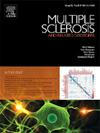Advances in MRI optic nerve segmentation
IF 2.9
3区 医学
Q2 CLINICAL NEUROLOGY
引用次数: 0
Abstract
Understanding optic nerve structure and monitoring changes within it can provide insights into neurodegenerative diseases like multiple sclerosis, in which optic nerves are often damaged by inflammatory episodes of optic neuritis. Over the past decades, interest in the optic nerve has increased, particularly with advances in magnetic resonance technology and the advent of deep learning solutions. These advances have significantly improved the visualisation and analysis of optic nerves, making it possible to detect subtle changes that aid the early diagnosis and treatment of optic nerve-related diseases, and for planning radiotherapy interventions. Effective segmentation techniques, therefore, are crucial for enhancing the accuracy of predictive models, planning interventions and treatment strategies. This comprehensive review, which includes 27 peer-reviewed articles published between 2007 and 2024, examines and highlights the evolution of optic nerve magnetic resonance imaging segmentation over the past decade, tracing the development from intensity-based methods to the latest deep learning algorithms, including multi-atlas solutions using single or multiple image modalities.
求助全文
约1分钟内获得全文
求助全文
来源期刊

Multiple sclerosis and related disorders
CLINICAL NEUROLOGY-
CiteScore
5.80
自引率
20.00%
发文量
814
审稿时长
66 days
期刊介绍:
Multiple Sclerosis is an area of ever expanding research and escalating publications. Multiple Sclerosis and Related Disorders is a wide ranging international journal supported by key researchers from all neuroscience domains that focus on MS and associated disease of the central nervous system. The primary aim of this new journal is the rapid publication of high quality original research in the field. Important secondary aims will be timely updates and editorials on important scientific and clinical care advances, controversies in the field, and invited opinion articles from current thought leaders on topical issues. One section of the journal will focus on teaching, written to enhance the practice of community and academic neurologists involved in the care of MS patients. Summaries of key articles written for a lay audience will be provided as an on-line resource.
A team of four chief editors is supported by leading section editors who will commission and appraise original and review articles concerning: clinical neurology, neuroimaging, neuropathology, neuroepidemiology, therapeutics, genetics / transcriptomics, experimental models, neuroimmunology, biomarkers, neuropsychology, neurorehabilitation, measurement scales, teaching, neuroethics and lay communication.
 求助内容:
求助内容: 应助结果提醒方式:
应助结果提醒方式:


